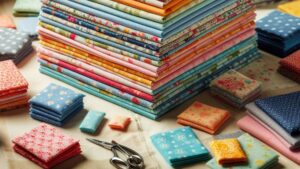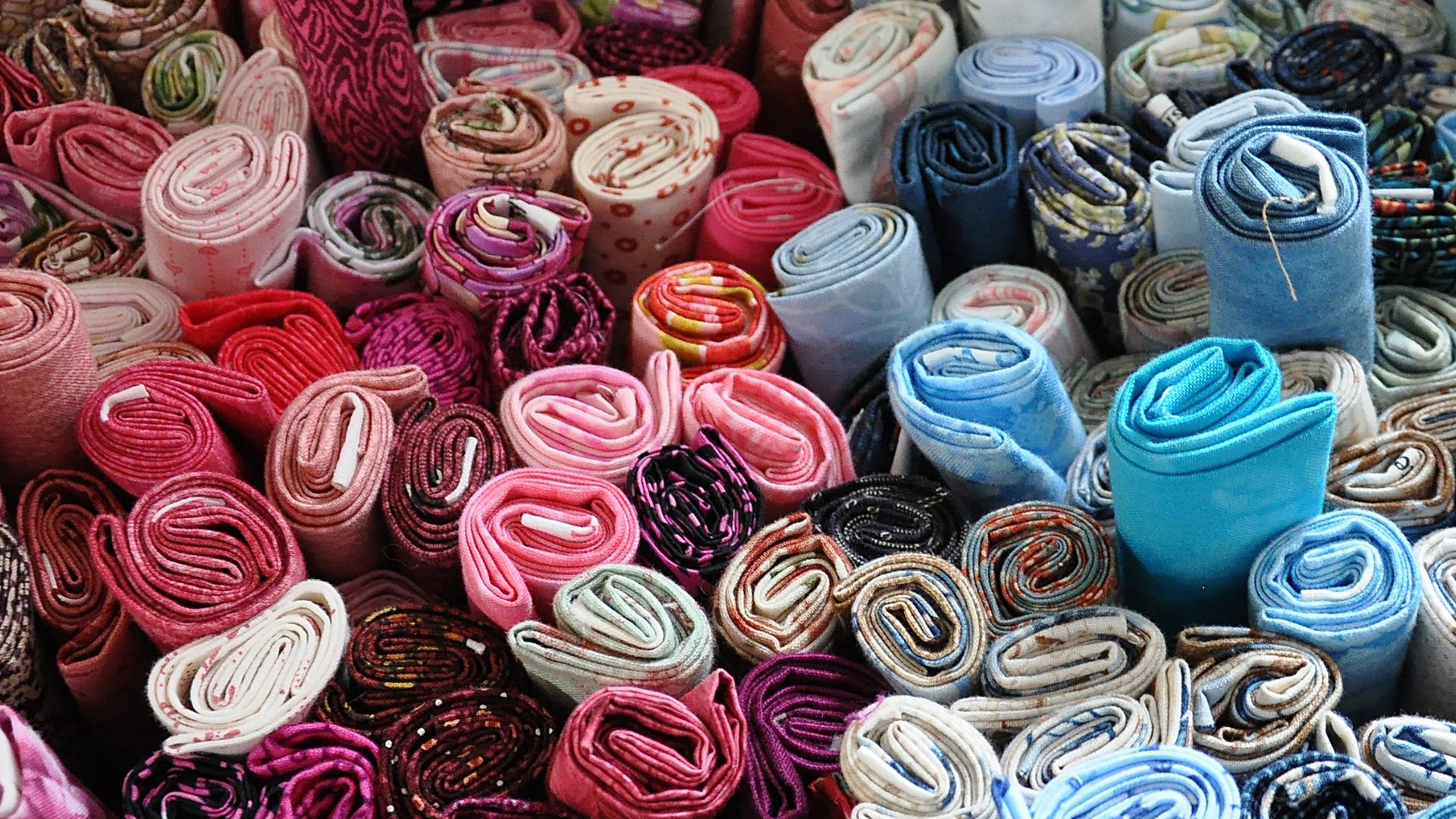Quilting is a cherished craft, but the fear of fabric bleeding can dampen the joy of creating your masterpiece. The last thing you want is for vibrant colors to blend into a murky mess or for whites to turn pink. Understanding how to prevent fabric bleeding is crucial for preserving the beauty of your quilt.
Let’s dive into some effective techniques to keep your colors crisp and your quilt looking stunning.
Understanding Fabric Bleeding
Fabric bleeding occurs when dyes release from one fabric and transfer to another, resulting in color migration. Different fabrics and dyes have varying levels of susceptibility to bleeding. For instance, vibrant or deeply dyed fabrics are more prone to bleeding than pastel or lighter-colored fabrics.
Pre-Wash Fabrics
Before starting your quilting project, pre-washing fabrics is a game-changer. Use cold water and a gentle detergent to wash each fabric separately. This step helps remove excess dye that could potentially bleed onto other fabrics during quilting or later washes.

Test for Colorfastness
Testing the colorfastness of fabrics is a crucial step. Dampen a small section of each fabric and press a white cloth against it. If the dye transfers to the cloth, the fabric is likely to bleed. Consider using a commercial color fixative to set the dye.
Use Retayne or Vinegar
Retayne is a commercial color fixative that helps lock in dyes and prevent bleeding. Follow the instructions on the product for best results. Alternatively, soaking fabrics in a solution of water and vinegar (one part vinegar to four parts cold water) can also help set dyes.
Separate Fabrics by Color
During quilting, separate fabrics by color to prevent potential bleeding. Dark or deeply colored fabrics should ideally not be placed next to light or white fabrics in the quilt design. This minimizes the risk of dyes transferring between fabrics.
Hand Wash or Use Color Catchers
After completing your quilt, hand washing is often the safest option to prevent bleeding. Use a gentle detergent and cold water. Adding color catchers to the wash helps trap loose dyes, preventing them from staining other fabrics in the quilt.
So,….
Preserving the vibrancy and integrity of your quilt involves taking proactive steps to prevent fabric bleeding. By pre-washing fabrics, testing for colorfastness, using fixatives like Retayne or vinegar, separating fabrics by color, and employing careful washing techniques, you can safeguard your quilt from potential color migration and ensure it remains a work of art for years to come.
Moving forward
Remember, while these methods significantly reduce the risk of fabric bleeding, it’s essential to periodically check and care for your quilt to maintain its beauty.
By following these tips, you can create stunning quilts without the worry of fabric bleeding. Enjoy your quilting journey, and may your creations always showcase the beauty of your craft.
Additional Tips for Long-Term Care
Ensuring your quilt stays vibrant goes beyond the initial creation phase. Here are some tips for long-term care:
Store Properly
Store your quilts in a cool, dry place away from direct sunlight. Avoid folding them too tightly to prevent creases. Consider using acid-free tissue paper to cushion folds and prevent color transfer between layers.
Avoid Harsh Chemicals
When washing your quilt, opt for gentle detergents without harsh chemicals or bleaches. These can damage fabrics and lead to color bleeding. Always follow the care instructions provided with your quilt.
Test Before Washing
Before washing your quilt, especially for the first time, test a small inconspicuous area to ensure the colors remain stable. If you’re uncertain about the fabric’s reaction to washing, consider professional cleaning services.
Periodic Checks
Regularly inspect your quilt for any signs of color bleeding or fabric deterioration. Address any issues promptly to prevent further damage. Repair loose seams or stitches to maintain the quilt’s structural integrity.
Conclusion
Your quilt represents not just your creativity but also the beauty of the fabrics you’ve carefully chosen. By incorporating these preventative measures and practicing proper care, you can safeguard your quilt against fabric bleeding and ensure it remains a cherished piece for generations.
Remember, each quilt tells a story, and preserving its colors and quality adds depth to its narrative. With these steps, you’re not just protecting fabric from bleeding; you’re safeguarding the essence of your craft.
Your quilts deserve to shine without the fear of colors running amok. Embrace your quilting journey, knowing that each stitch is a testament to your skill and passion.
Comparison tabular
| Methods for Preventing Fabric Bleeding | Description | Ease of Implementation | Effectiveness |
|---|---|---|---|
| Pre-Washing Fabrics | Washing fabrics before quilting to remove excess dye | Easy | High |
| Testing for Colorfastness | Assessing fabrics for dye stability | Moderate | Moderate to High |
| Use of Retayne or Vinegar | Applying commercial fixatives or vinegar solutions | Moderate | High |
| Separating Fabrics by Color | Strategically placing fabrics to minimize bleeding risk | Easy | High |
| Hand Wash or Color Catchers | Employing careful washing methods or using color-catching products | Moderate | Moderate to High |
| Proper Storage and Care | Storing quilts properly and using gentle detergents | Easy | High |
This comparison table provides a quick snapshot of each method’s ease of implementation and effectiveness in preventing fabric bleeding in quilts. Feel free to use this table as a reference guide for selecting the best methods suited to your quilting needs.
Wrapping up
Creating a beautiful quilt is a labor of love, and preserving its colors is an essential part of the journey. By adopting pre-emptive measures like pre-washing fabrics, testing for colorfastness, using fixatives, and practicing careful washing and storage techniques, you can ensure your quilt remains a vibrant testament to your craftsmanship.
Remember, each quilt holds a story within its stitches and fabrics. Safeguarding it against fabric bleeding ensures that its narrative remains vivid and captivating for generations to come.
So, quilt with confidence, knowing that these preventative steps will keep your colors crisp, your designs stunning, and your quilts cherished heirlooms. Enjoy the artistry of quilting, and may your creations continue to weave tales of creativity and beauty.

For over a decade, I’ve been Mike, an artist, crafter, and designer deeply immersed in the Croc world. I thrive on crafting unique, size-inclusive patterns, fostering creativity, and sharing them on ktforum.com. My designs aim to ignite your creative spark and delight you, ensuring clarity and ease of use through rigorous testing. Join me in expressing your creative flair and showcasing your craft with joy.
Related Posts
- Quilting with Flannel Fabric: Your Comprehensive Guide
Quilting is a beautiful craft that allows you to create cozy, functional, and artistic pieces.…
- Creating Even Stitches in Your Quilt: A Comprehensive Guide
Quilting is an art form that involves precision, creativity, and attention to detail. One crucial…
- Can I mix different types of fabric in a quilt
Absolutely, you can mix different types of fabric in a quilt! This opens up a…
- Essential Tools for Quilting: Your Comprehensive Guide
Quilting is a cherished art form that weaves together creativity and skill. Whether you're a…

